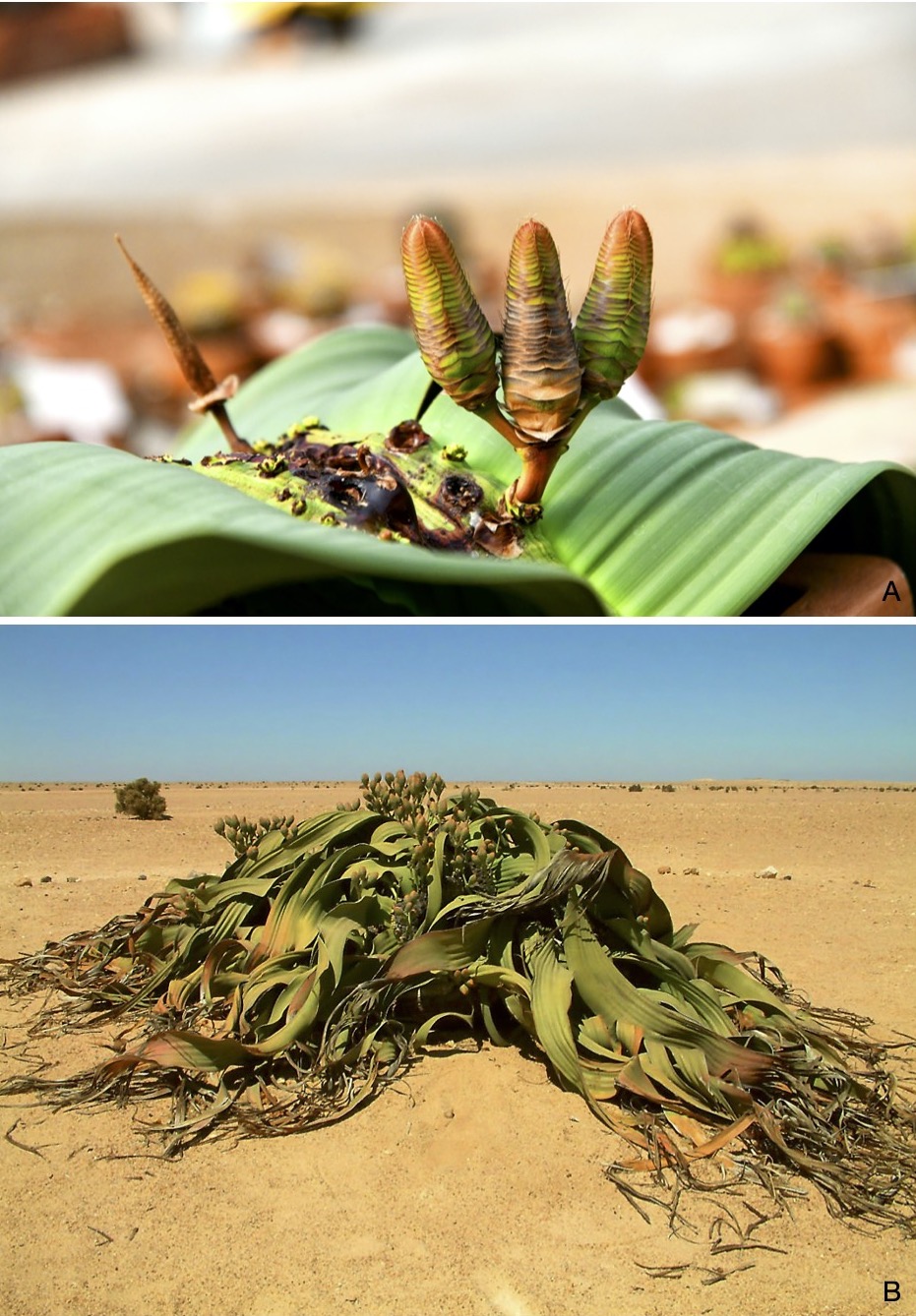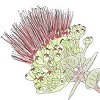8.5: Gnetophytes
- Page ID
- 63003
\( \newcommand{\vecs}[1]{\overset { \scriptstyle \rightharpoonup} {\mathbf{#1}} } \)
\( \newcommand{\vecd}[1]{\overset{-\!-\!\rightharpoonup}{\vphantom{a}\smash {#1}}} \)
\( \newcommand{\id}{\mathrm{id}}\) \( \newcommand{\Span}{\mathrm{span}}\)
( \newcommand{\kernel}{\mathrm{null}\,}\) \( \newcommand{\range}{\mathrm{range}\,}\)
\( \newcommand{\RealPart}{\mathrm{Re}}\) \( \newcommand{\ImaginaryPart}{\mathrm{Im}}\)
\( \newcommand{\Argument}{\mathrm{Arg}}\) \( \newcommand{\norm}[1]{\| #1 \|}\)
\( \newcommand{\inner}[2]{\langle #1, #2 \rangle}\)
\( \newcommand{\Span}{\mathrm{span}}\)
\( \newcommand{\id}{\mathrm{id}}\)
\( \newcommand{\Span}{\mathrm{span}}\)
\( \newcommand{\kernel}{\mathrm{null}\,}\)
\( \newcommand{\range}{\mathrm{range}\,}\)
\( \newcommand{\RealPart}{\mathrm{Re}}\)
\( \newcommand{\ImaginaryPart}{\mathrm{Im}}\)
\( \newcommand{\Argument}{\mathrm{Arg}}\)
\( \newcommand{\norm}[1]{\| #1 \|}\)
\( \newcommand{\inner}[2]{\langle #1, #2 \rangle}\)
\( \newcommand{\Span}{\mathrm{span}}\) \( \newcommand{\AA}{\unicode[.8,0]{x212B}}\)
\( \newcommand{\vectorA}[1]{\vec{#1}} % arrow\)
\( \newcommand{\vectorAt}[1]{\vec{\text{#1}}} % arrow\)
\( \newcommand{\vectorB}[1]{\overset { \scriptstyle \rightharpoonup} {\mathbf{#1}} } \)
\( \newcommand{\vectorC}[1]{\textbf{#1}} \)
\( \newcommand{\vectorD}[1]{\overrightarrow{#1}} \)
\( \newcommand{\vectorDt}[1]{\overrightarrow{\text{#1}}} \)
\( \newcommand{\vectE}[1]{\overset{-\!-\!\rightharpoonup}{\vphantom{a}\smash{\mathbf {#1}}}} \)
\( \newcommand{\vecs}[1]{\overset { \scriptstyle \rightharpoonup} {\mathbf{#1}} } \)
\( \newcommand{\vecd}[1]{\overset{-\!-\!\rightharpoonup}{\vphantom{a}\smash {#1}}} \)
Gnetophytes (Phylum Gnetophyta)
Gnetales are the least familiar group of gymnosperms. There are 112 species in the world (Christenhusz and Byng, 2016), being divided into three main subgroups: Welwitschia (1 species), Gnetales (43 species), and Ephedrales (68 species). Welwitschia is an odd-looking plant adapted to extremely arid environments, being native to the Namibian Desert in Africa (Angola and Namibia). It has a short stem and only develops two leaves over its long lifetime. Some of the oldest plants can be 3,000 years old. The leaves can reach up to 2 meters (6 feet) in length and will continue to grow the entire life of the plant. The leaves usually coil and get split by the wind (Figure \(\PageIndex{1}\)).

An example of a plant in the Ephedrales group is Mormon tea (Ephedra spp.), which is common in arid regions of the Southwestern United States (Figure \(\PageIndex{2}\)). Mormon tea, and a similar species in China from which ephedrine is extracted, have been used for millennia for treating asthma. Currently, ephedrine is used to prevent low pressure during anesthesia and most of it is synthetically manufactured, although some Ephedra species are still cultivated for extraction of natural ephedrine.


